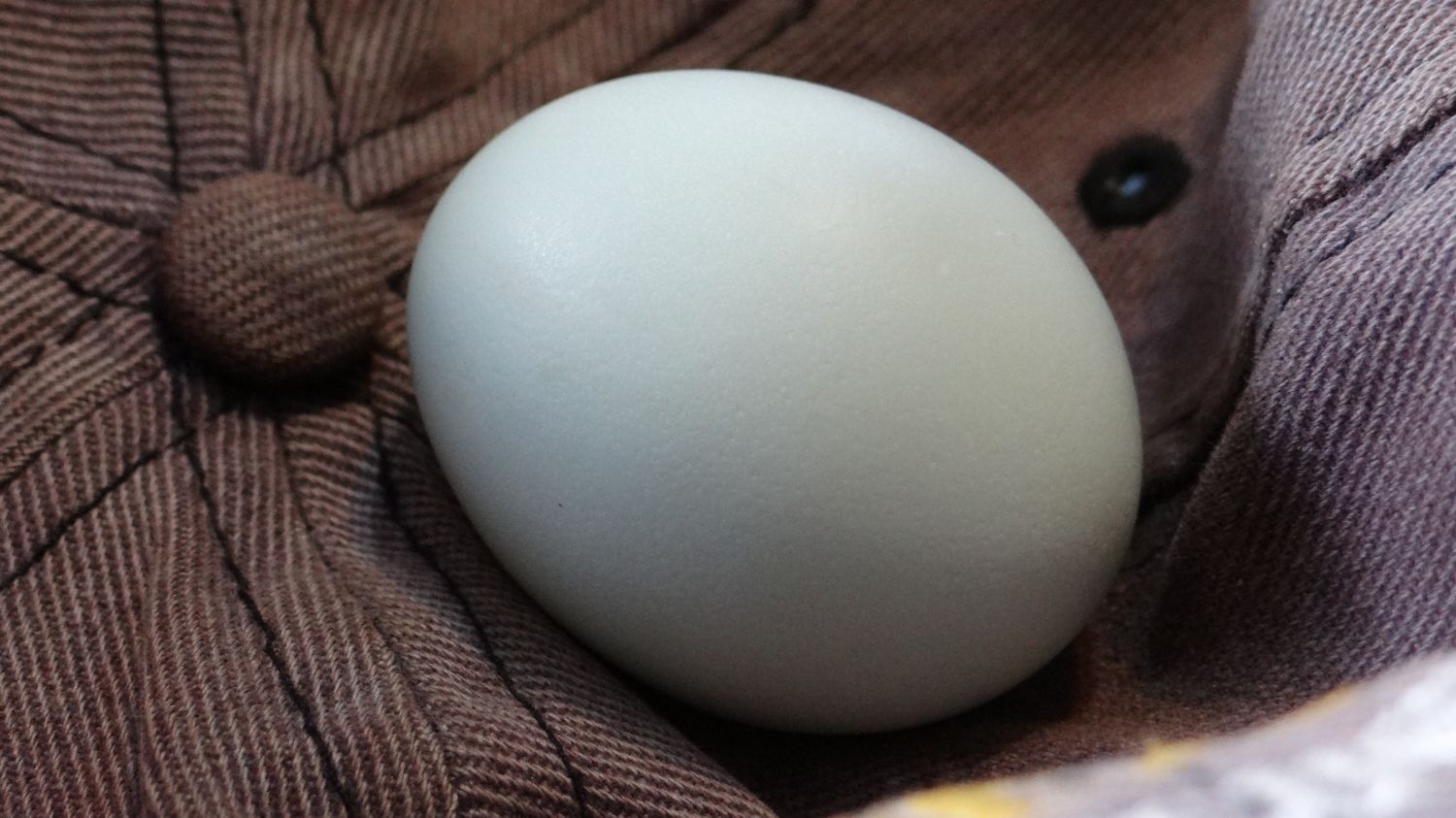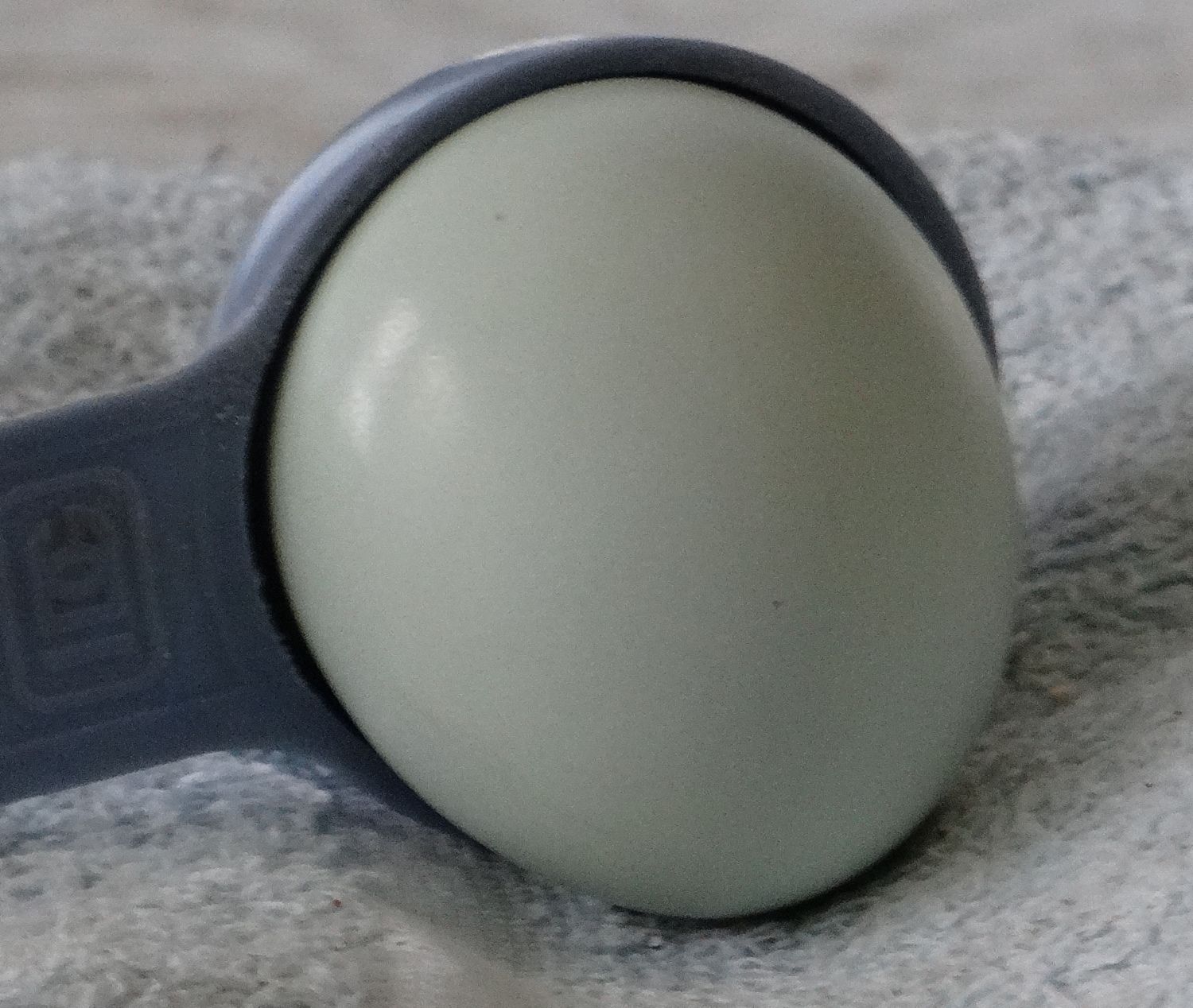I got my first egg yesterday! I am very happy with the color. Its a more saturated blue then my ameraucana. They just turned 24 weeks on Monday.
Navigation
Install the app
How to install the app on iOS
Follow along with the video below to see how to install our site as a web app on your home screen.
Note: This feature may not be available in some browsers.
More options
You are using an out of date browser. It may not display this or other websites correctly.
You should upgrade or use an alternative browser.
You should upgrade or use an alternative browser.
The Legbar Thread!
- Thread starter jeremy
- Start date
hello Valdosta!!! I am in Tifton....don't usually see a lot of South Georgia folks on here...if they are from GA it's usually around Atlanta
Nice to meet a neighbor! There are several people on here from south ga. I will PM you some usernames if you want. I know several in Adel, moultrie, thomasville, Cairo, quitman etc.
I agree about the color. I picked one up from the egg box yesterday and just had to look at it a while. The color was beautiful and I love the size of the egg also. Color and size was the main reason I decided to go with just the Legbars for my blue eggs. My Lav Ams just could not compete on either color or size, though I sure did love their personalities and looking at them - they are beautiful birds, kinda ethereal in a way I think.I got my first egg yesterday! I am very happy with the color. Its a more saturated blue then my ameraucana. They just turned 24 weeks on Monday.
Well anyway - Congrats ladyfaeden and enjoy them!
My bantam cream legbar project will have to wait until I find better hens. The 2 bantams hens I was going to use turned out to be egg eaters. I plan to put my first batch of rose combed project eggs in the incubator this coming week. Frederick has been mating like crazy with everything and I know some roosters can be fertile at 4-5 months so why not try it.
Congratulations ladyfaeden-------------I got my first egg yesterday! I am very happy with the color. Its a more saturated blue then my ameraucana. They just turned 24 weeks on Monday.
How great to get that first egg. I'mLooking forward to my first one--- hopefully soon, mine were 22-weeks on Monday. Thanks for the info.
I've noticed white legbars for sale and the listing saying they are autosexing. I'm wondering if the whites have been around long enough to know that this trait will survive a generation or two of breeding white to white?
There are no adult white leg bars in the US. I don't see why the auto sexing wouldn't continue. Nothing was intermixed into the breed to great them. They are in fact cream leg bars with the color blocked.
I've noticed white legbars for sale and the listing saying they are autosexing. I'm wondering if the whites have been around long enough to know that this trait will survive a generation or two of breeding white to white?
The latest information that I have on the White gene is the following from a Poultry Genetic Forum (See quote below).
Yes, the ressessive white gene that is cuasing the white in the Legbars is a very well studies and know gene. The white Legbars will carry on the white color as long as they are breed to another white legbars. If they are bread to a stadard color bird you will get stanard color Legbars (unless you have a carrier for white).
The recommendation in many standards for White varieties of a breed are to use dominate white, recessive white, barring, and the black dilutor gene that is used to make blue and splash colors. Any one of the genes above will not have the ability to create a pure white bird. The dominate white over a bird that is normally a dark color will result in "leaking" making a spotted bird. The ressesive white over a bird with gold plumage will result in a yellow hue where the gold feathers normally are. Red feathers will show through dominant white as in the ply colored birds, etc... The combination of all the white genes result in a pure white bird with out any hues of red or gold, or black spots.
So....white leghorns would have the ressesive white gene. Michael Pease discoved the Cream Plumage when Crossing a white Leghorn Cockerel with Gold Legbar hen to improove egg production. Whether the recessive white gene was introduce that early (the cream color was discovered before the blue eggs and cresting were introduced) or by later breeder is unknow.
Quote: When I purchased the birds, David warned me that whites crop up every now & again. He wanted me to be aware & said to cull them should they crop up..... David said the white had come about because someone, way back, had crossed to a white leghorn. ..... white leghorns are dominant white, & in UK they are almost always on extended black with barring to remove the dark pigment from the shanks. I suppose it is possible for the whites to have been also carrying recessive white. As it happened I never had any whites crop up.
Heterozygous recessive white is not usually apparent in chick down or adult plumage. However, Clive Carefoot said he could tell which of his Partridge Wyandottes were carrying recessive white due to a brightness of colour. Heterozygous dominant white on e+ gives a pyle coloured bird & would be apparent in chick down.
Regards
First egg today!
It is about C15 on this chart --but looks a little different in different light.
http://www.feathersite.com/Poultry/CGA/Arau/BRKArauEgg.html

Egg in baseball cap

Egg on blue towel---
That is a standard tablespoon....the egg weighed 1.260 ounces. Yea Robin----she's an egg layer. 22-weeks on Monday so 22-weeks and 4-days. Bravo little pullet!!
It is about C15 on this chart --but looks a little different in different light.
http://www.feathersite.com/Poultry/CGA/Arau/BRKArauEgg.html

Egg in baseball cap

Egg on blue towel---
That is a standard tablespoon....the egg weighed 1.260 ounces. Yea Robin----she's an egg layer. 22-weeks on Monday so 22-weeks and 4-days. Bravo little pullet!!
Last edited:
I got some eggs from Sheriff and one is pipped tonight! I'm so excited, I'll update everyone when they hatch out as far as gender goes
New posts New threads Active threads
-
Latest posts
-
-
Canker not improving any advice please
- Latest: Boergoatlover
-
-
-
-
-
Latest threads
-
-
-
What poultry would you get this new year?
- Started by Not-so Slick Chicken
- Replies: 0
-
Pre-built shed to replace old Coop?
- Started by CascadiaRiver
- Replies: 2
-
Thin/untidy feathers on 8 month old hens
- Started by Bakawk
- Replies: 0
-
-
Threads with more replies in the last 15 days
-
-
Introducing TUDYBOOK - The Tudy Coloring Book Generator
- Started by Nifty-Chicken
- Replies: 70
-
-
Open Contest TudyBook Holiday Dreams, a Text-to-Image Contest
- Started by Debbie292d
- Replies: 46
-
-
×

